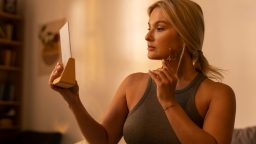In recent years, consumers have become increasingly aware of the ethical and environmental impact of their purchasing decisions. One area that has seen significant attention is the beauty and personal care industry, particularly when it comes to the issue of animal testing. As people seek to align their values with their shopping habits, the demand for cruelty-free products has skyrocketed. But how can you be sure that a product is truly cruelty-free? In this article, we’ll explore how to identify cruelty-free products, what certifications to look for, and the importance of supporting cruelty-free brands.
What Does „Cruelty-Free” Mean?
A product is considered cruelty-free if it has not been tested on animals at any point during its production, including both the final product and the individual ingredients. While this definition may seem straightforward, there can be some confusion about what cruelty-free means in practice, especially when brands make misleading claims.
A cruelty-free product does not necessarily mean that the brand as a whole is free from other ethical concerns (such as environmental sustainability or ethical labor practices). However, when a product is cruelty-free, it means that no animals were harmed or used in testing the product.
Cruelty-Free Certifications and Logos to Look For
The easiest way to ensure that a product is truly cruelty-free is by looking for certifications from recognized organizations. These certifications are granted to brands that meet specific criteria regarding animal testing. Some of the most reputable cruelty-free certifications include:
- Leaping Bunny
The Leaping Bunny logo, issued by the Coalition for Consumer Information on Cosmetics (CCIC), is one of the most trusted and recognized symbols of cruelty-free certification. Brands that carry this logo have undergone a rigorous certification process that ensures no animal testing occurs at any stage of product development.
What to look for: The Leaping Bunny logo is usually found on the back of product packaging. It’s important to note that this certification applies not only to the final product but also to the ingredients, ensuring that the brand follows strict cruelty-free practices throughout its entire supply chain.
- PETA’s Beauty Without Bunnies
PETA’s Beauty Without Bunnies program is another widely recognized certification that verifies a brand’s cruelty-free status. PETA (People for the Ethical Treatment of Animals) maintains an extensive list of cruelty-free companies, and products that meet their criteria are given the “cruelty-free” label. PETA’s certification does not allow animal testing at any stage of product development or manufacturing.
What to look for: PETA’s cruelty-free logo (often with a rabbit icon) is an easy way to identify products that have been vetted by the organization. PETA also maintains a searchable online database of cruelty-free brands for easy reference.
- Choose Cruelty-Free (CCF)
Choose Cruelty-Free is an Australian-based non-profit organization that offers cruelty-free certification for products sold in Australia and New Zealand. The organization conducts thorough audits to ensure that brands do not test on animals or use ingredients that have been tested on animals.
What to look for: The Choose Cruelty-Free logo (a bunny with a circle) is often found on product packaging and is recognized as a sign that a product is cruelty-free.
Understanding „Not Tested on Animals” Claims
While many products proudly state „not tested on animals” on their packaging, this claim can sometimes be misleading. Here’s what to look for when you come across such a label:
- “Not tested on animals” vs. “Cruelty-free”: „Not tested on animals” simply means that the product itself was not tested on animals. However, this does not guarantee that the individual ingredients were not tested on animals, or that the product hasn’t been tested in countries where animal testing is required by law (such as China). To ensure a product is completely cruelty-free, it must meet the stricter standards outlined by recognized certifications like Leaping Bunny or PETA.
- Brands sold in China: It’s important to be aware that some countries, including China, require animal testing for certain imported beauty and personal care products. Even if a brand claims to be cruelty-free, if they sell in China (and don’t meet specific exemptions), it’s likely that their products were tested on animals to meet local regulations. Therefore, always check a brand’s stance on China to verify their cruelty-free status.
Other Labels and Claims to Watch Out For
Several other terms and phrases can indicate a brand’s stance on animal testing, but they might not always be as reliable as certifications. Here are some claims to look out for:
- Vegan
While vegan products are free from animal-derived ingredients, this does not necessarily mean they are cruelty-free. A product could be vegan but still tested on animals. To ensure the product is both vegan and cruelty-free, look for both the Vegan and Cruelty-Free certifications on the packaging.
- “No Animal Testing”
This term is not regulated, and companies can use it without proof or verification. While it may suggest that the company does not conduct animal testing, it’s important to confirm the cruelty-free status through official certifications like the Leaping Bunny or PETA.
- “Natural” or “Organic”
Some people assume that natural or organic products are cruelty-free, but this isn’t always the case. The term “natural” refers to ingredients sourced from nature, and “organic” means the product is made with ingredients grown without pesticides. Neither term has any bearing on whether animal testing was involved in the product’s creation.
Do Your Research: Online Resources and Databases
In addition to checking product labels, you can do your research through online resources that track cruelty-free brands. Many organizations, including PETA and Leaping Bunny, offer online databases where you can search for cruelty-free brands and products. These databases are a great way to stay up-to-date and make informed decisions when shopping for cruelty-free items.
Some popular online resources include:
- PETA’s Beauty Without Bunnies database: PETA provides a list of cruelty-free brands and regularly updates it.
- Leaping Bunny’s Certified Brands List: Leaping Bunny has a comprehensive database of cruelty-free brands across various product categories.
- Cruelty-Free Kitty: This blog and resource site offers a list of cruelty-free brands, as well as detailed breakdowns of their testing policies.
Why Choose Cruelty-Free Products?
Choosing cruelty-free products means supporting brands that align with your values and promote ethical treatment of animals. But beyond ethics, there are several other reasons to make the switch to cruelty-free beauty and personal care items:
- Support ethical brands: Cruelty-free brands prioritize the well-being of animals, and many also focus on other ethical considerations, such as sustainable sourcing, fair labor practices, and eco-friendly packaging.
- Healthier ingredients: Many cruelty-free brands focus on using natural, plant-based ingredients that are gentle on the skin and free from harsh chemicals.
- Quality and innovation: Cruelty-free brands often focus on creating high-quality products that are effective and innovative, without the use of animal testing.
Conclusion
Identifying cruelty-free products is an important step toward making more ethical and conscious choices when it comes to your skincare and beauty routines. By looking for official certifications like the Leaping Bunny, PETA, or Choose Cruelty-Free logos, you can confidently select products that align with your values and ensure that no animals were harmed in the making of those products. Always be vigilant about claims like “not tested on animals” or “natural,” and don’t hesitate to do a bit of extra research to verify a brand’s cruelty-free status. Choosing cruelty-free products helps support a kinder, more compassionate world while still enjoying high-quality beauty and skincare.





